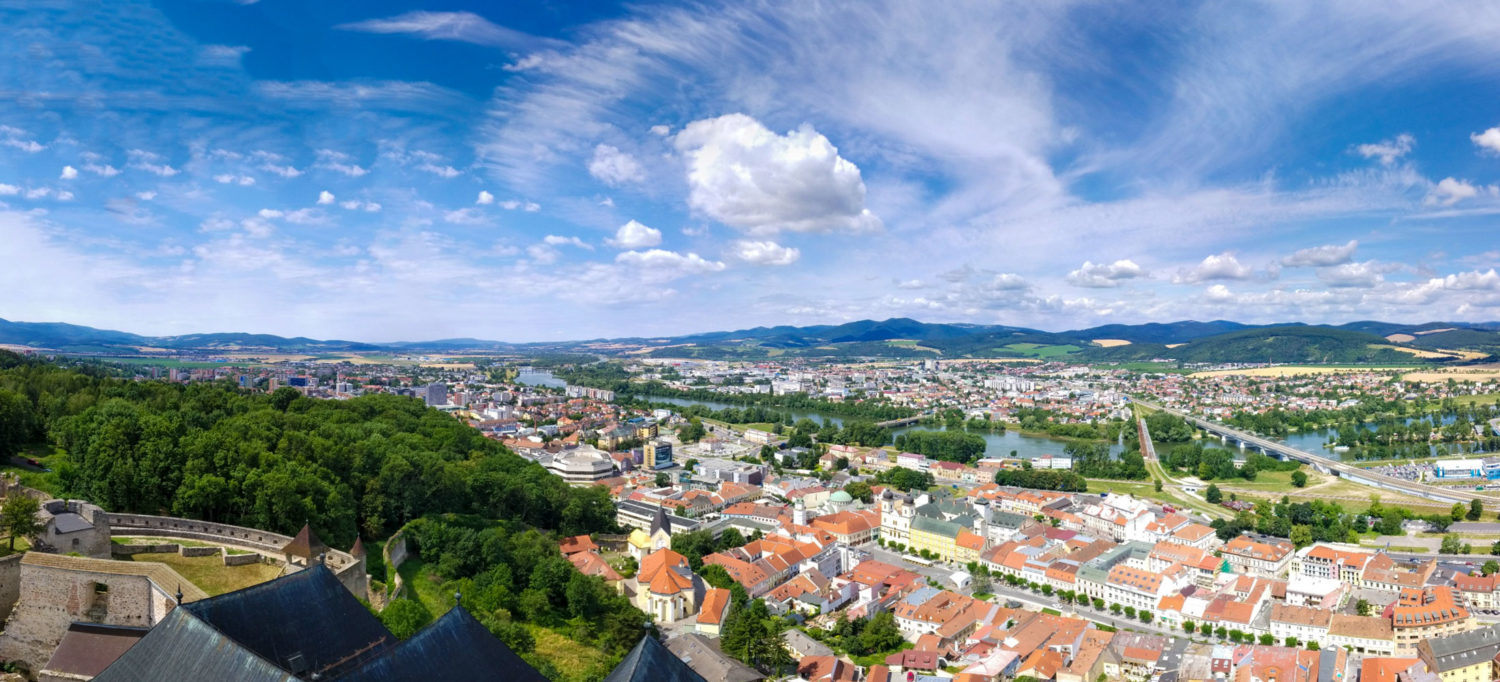Research on the Identity of Soldiers Buried in the Trenčín War Cemetery
In historical research on war cemeteries, one of the most important areas of investigation is the clarification of identities of the victims buried there. The objective is to compile the most accurate list of soldiers and to obtain as much data about them as possible. This can only be done with careful analysis of all available historical sources. Similarly, this was also the case with the Trenčín War Cemetery (municipal).. The primary sources on this topic are collected at the Institute of Military History in Bratislava. The Trenčín War Cemetery has its own archival file, which consists of a cadastral certificate, a list of the buried, registration sheets for individual graves, and sketches of the cemetery. However, although the list of the fallen buried at the cemetery already existed, source criticism has shown that it is incomplete and lacks various data.
Cemetery registry of war graves, and its significance
In addition to the file on the war cemetery, the military historical archive also contains other sources. We had high hopes for the registry of the reserve hospital in Trenčín. Unfortunately, as it turned out, this archive has a completely empty registry. There is not a single record in it. Fortunately, there is also the cadastre of war graves in Trenčín. The cadastre registers graves in all cemeteries in the city of Trenčín. Its records are comprehensive and contain the following data of the deceased: the grave number, rank, name and surname, unit (e.g. regiment), subunit (e.g. company), data on residence (city, district, state), religion, year of birth, cause of death, date of death, date of burial, place of death (usually a hospital). This summary is essentially a copy of the records from the reserve hospital’s registry, the absence of which we have therefore not experienced in any way.
The emergence of war cemeteries in Trenčín
At the outset of the war in summer 1914, it became clear that society was unprepared for such a conflict. Heavy battlefield losses shocked the public—not only the number of fallen, but also thousands of wounded transported inland. Every city and town in the monarchy had to adapt its health infrastructure to treat and accommodate soldiers. Hospital capacities were soon exhausted, leading to the conversion of public buildings into emergency hospitals. Near cities, hospital barracks were built, mainly for patients with contagious diseases. At the same time, observation stations were established throughout the monarchy to receive wounded and sick soldiers returning from the front. After a few days, they were transferred to other facilities.
Fourteen such facilities were built in the Hungarian territories of Austria-Hungary, one of which was in Trenčín. Despite these efforts, some of the hospitalized soldiers could not be saved. Research shows that in spite all the problems, and the general lack of crucial medicines, the lives of most patients were ultimately saved. The mortality rate in medical facilities in the hinterland did not exceed 3% of all treated cases. Consequently, the number of soldiers buried in Trenčín can also inform us on how many wounded and sick soldiers passed through the city in the years 1914–1918.
Division of war cemeteries
During the war, burials in Trečín were held in five different locations. We can therefore consider them as five war cemeteries. Three of them are small and burials took place there according to religious affiliation: the Trenčín War Cemetery (Evangelical, Roman Catholic, Jewish). Two other cemeteries are large, and burials took place there regardless of religious affiliation. The first of them is the Trenčín War Cemetery (municipal), which is the subject of this article, and the second is the Trenčín-Veľká Kubrá War Cemetery, where, according to the archive materials, 771 soldiers are buried.
Trenčín War Cemetery (municipal)
The Trenčín War Cemetery (municipal) is located within the municipal civilian cemetery, situated on a terraced slope called “Paľove boky”. Access from its west side is possible via the Soblahovská Street, and from the east via the Saratovská Street. The burial chapel, as the central point of the entire war cemetery, is located at its highest point. cemetery includes tall greenery, with treetops covering the lateral and bird’s-eye views. The entire cemetery covers an area of about 3500 m².
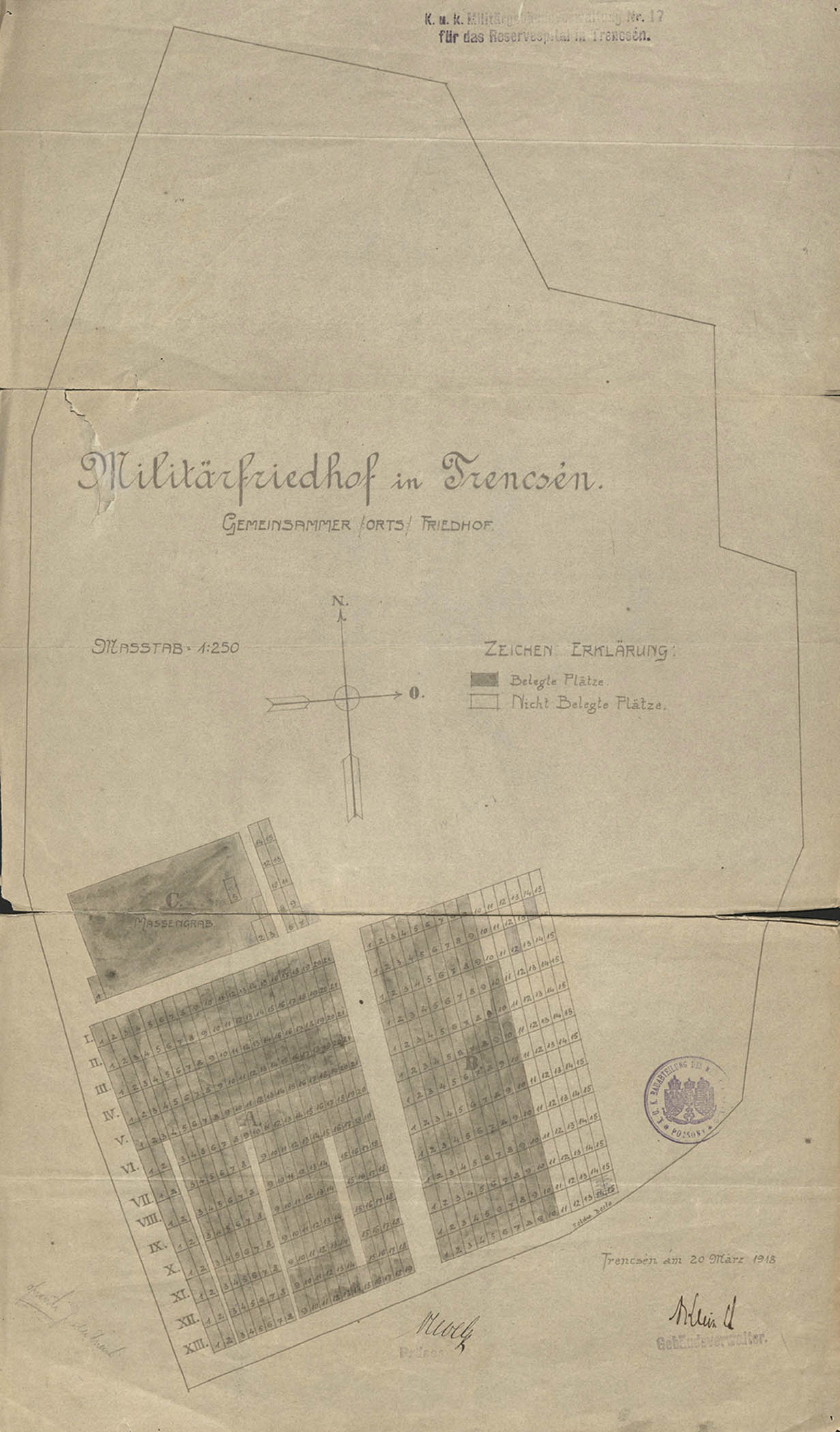
Origin of the cemetery
The war cemetery was established at the very beginning of World War I; soldiers who died in medical facilities in Trenčín were buried here. Of those soldiers, a total of 332 died in the reserve hospital, another 124 died in the Trenčín observation station, and 24 in the local county hospital. One soldier died in the Honvéd Barracks before he could be saved.
Soldiers died from a wide range of diseases or postoperative complications. Many died from sepsis or gangrene, which was a consequence of gunshot wounds to the abdomen, chest, head, or limbs. Sepsis also appeared as a consequence of amputations. Deaths caused by multiple organ failure, heart attacks, or strokes, were not uncommon. Pneumonia, tetanus, typhus, tuberculosis, or dysentery were the most frequent diseases. In 43 cases, the cause of death is unknown.
Beginnings of burial and development of the cemetery
Burials were held at this cemetery since September 1914. The first soldier buried at the municipal cemetery died on September 4, 1914, and was buried on the same day. Initially, war victims were buried in mass graves (rather than individual graves); therefore, Sector C was established first. Apparently, the entire burial logistics were still being developed during this period. After the initial improvised mass burials and individual graves chaotically distributed in Sector C, the systematic rows of individual graves in Sector A were gradually established. Since April 1915, burials began also in Sector B and were held here regularly until June 1915. At that time, authorities began responding to public protests against the daily transportation of soldiers’ bodies through the city, since many had died from infectious diseases.
As a result, burials were increasingly conducted at the Trenčín War Cemetery in the Veľká Kubrá district, and the municipal cemetery became used only sporadically: there were only 13 burials until the end of the war. However, after World War I ended, battles against the Hungarian army began to control the territory of southern Slovakia. The military hospital was reestablished in Trenčín and soldiers were dying here again of injuries and diseases. This time, they were the members of the Czechoslovak army. A total of 44 Czechoslovak army members were buried in the war cemetery.
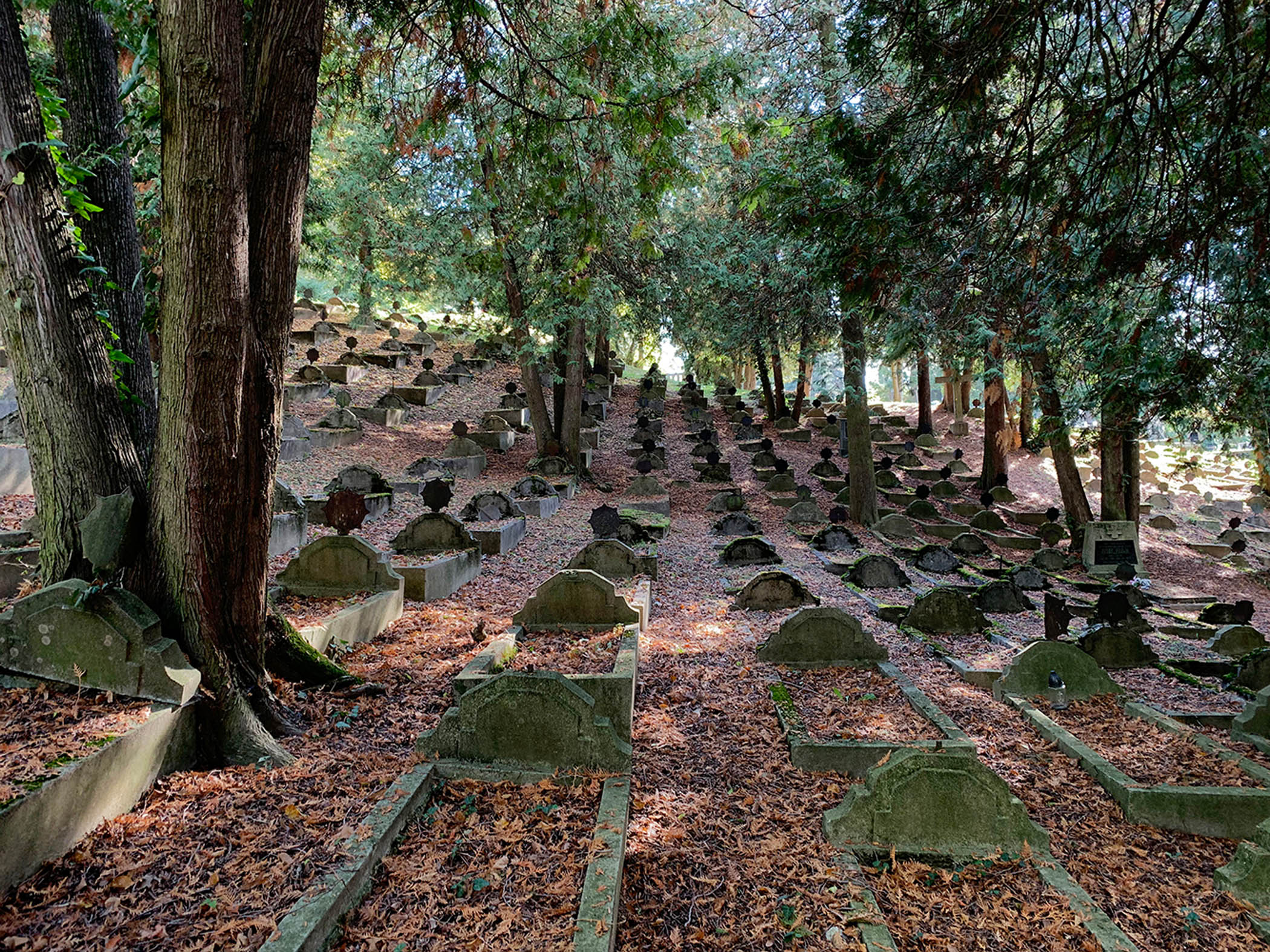
Geographical and military division of the victims in the cemetery
The soldiers buried in this cemetery can be categorized according to the historical regions or countries recorded as the place of their residence. According to this categorization, the soldiers came from 22 territories of what was then Germany, Austria-Hungary, Russia, or Italy. Most soldiers, 147, came from Hungary. Based on present-day geographical division, soldiers from a total of 15 countries are buried here, with the most, 112, coming from the territory of the present-day Czech Republic. According to this categorization, the origin of 53 soldiers is unknown. Most of them are soldiers of the Russian army whose residence records are so distorted that we cannot determine which part of the former Russian Empire they came from.
According to the military affiliation of the buried, there are 375 members of the Austro-Hungarian Army, 51 members of the Russian Army, 34 members of the Czechoslovak Army, 12 members of the German Army, two members of the Hungarian Red Army, two members of the Italian Army, and one member of the Polish Army (the Polish Legion of the Austro-Hungarian Army).
In most cases, the soldiers’ religious affiliation is the only known personal detail. As many as 336 buried soldiers were of Roman Catholic faith, 49 were Orthodox, 40 were Evangelical, 25 were Greek Catholic, and 12 were Calvinist. Other personal data, such as their occupation or status, are absent from the records.

Sources of data and discrepancies in the burial lists
To compile the list of buried soldiers, we relied on the general list included in the archival file of the war cemetery. While this list provides basic information about the deceased, it is certainly incomplete. We can complement the missing data by consulting a second source, the cadaster of war graves. This cadaster contains records of war graves from all war cemeteries in Trenčín. It provides more comprehensive information and a more logically structured format. Each record contains: the grave number, name and surname, unit (regiment), subunit (company, squadron, battery), nationality, religion, year of birth, cause of death, date of death, date of burial, place of death (hospital).
A comparison of both sketches showed that the records of 18 soldiers were completely missing from the list in the archive file. Why these records were absent from is not clear. The list from the archive contained various errors (wrong transcriptions of personal names or names of cities and villages). By comparing the sketches from 1922 and 1925, we found that Sectors A and B are depicted identically, but differences lie in Sector C, where the 1925 sketch shows a larger number of graves.
Sector A
There are 253 graves in Sector A. All graves are individual and are arranged in thirteen rows. A record exists that provides information on each buried soldier. The buried is unknown only in one grave, no. A-V-4. The research in this sector was completed with no uncertainties.
Sector B
According to all sketches, there are 195 graves in Sector B. The graves are arranged in thirteen rows. There are 15 graves in each row. At first glance, the absence of records for graves no. 11-15 in each row of Sector B is striking. This makes a total of 65 graves with no information. It is suggested that the sketches indicated how the war cemetery was supposed to expand and gradually fill. This assumption could be confirmed by the fact that in one sketch, dated March 1918, the graves in the cemetery are divided. The area with the graves in which the soldiers are buried is coloured in pencil or charcoal accompanied by the note “belegle plätze”. This German phrase could be translated as occupied places.
Most of the graves with numbers 11-15 in Sector B are not coloured and these graves are marked “nicht belegle plätze”. The exceptions are grave no. 14 in row II and grave no. 12 in row III. They are also coloured, which means that soldiers were already buried in them by 1918. On the other hand, graves with the number 10 in rows I-III were still empty in March 1918 according to this sketch. However, this is the situation in March 1918, and burials were still taking place in the cemetery during the following period. It is therefore important to find out about the development of the cemetery in the remainder of the year 1918 and in 1919.
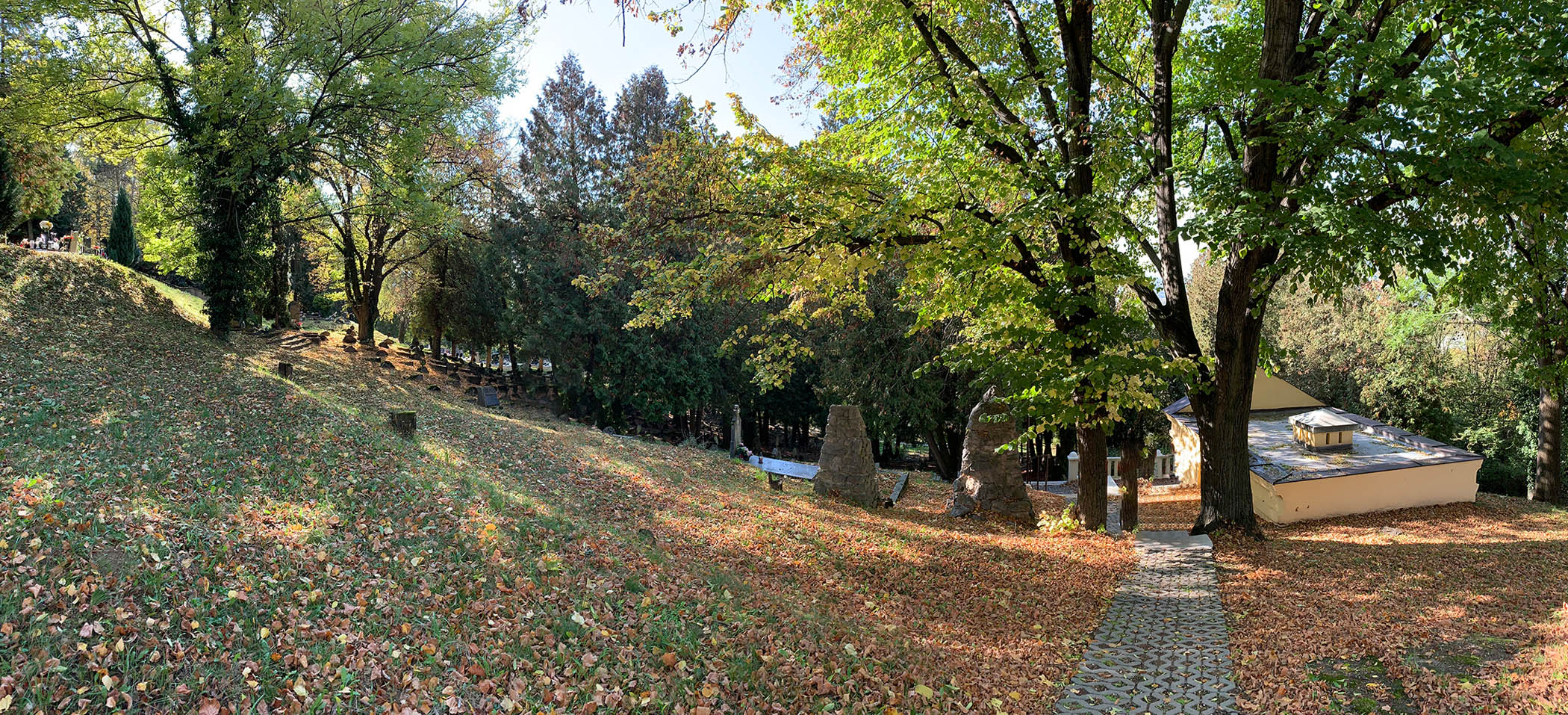
Verified data and open research questions
Regarding the research findings in Sector B, archival sketches indicate the presence of 195 individual graves. However, our research was able to obtain information for only 130 graves, containing the remains of 127 identified soldiers and three unknown individuals. Therefore, we can confirm the existence of 130 graves in this sector with certainty. No data is available for the remaining 65 graves. Since archival documents provide no information on these unverified graves, we are inclined to hypothesize that only 130 graves actually existed in this sector. Nevertheless, we cannot entirely rule out the possibility that burials continued here after the end of World War I, particularly concerning the battles for southern Slovakia in 1919. As mentioned in the research findings for Sector C, where Czechoslovak army soldiers are buried, this remains the area of greatest uncertainty.
Sector C
Of all three sectors of the Trenčín War Cemetery, Sector C appears to be the simplest at first glance. It consists of a mass grave where 39 soldiers are buried. According to the sketch, Sector C looks more like a field of tombstones than a mass grave. We have records for all 39 soldiers buried in this mass grave. Another 15 graves were placed inside Sector C and next to it. To the left of Sector C is grave no. 1, while graves no. 2-5 are located on the open area. To the right of Sector C, graves no. 6-15 are arranged in two rows. We also have records for these fifteen graves. In 1919, graves of Czechoslovak soldiers began to be established in this area. Unfortunately, we must note that these Czechoslovak graves are very poorly documented in the cemetery sketches.
Burial of Czechoslovak soldiers and issues with grave numbering
To summarize the Sector C, there is a mass grave with 39 soldiers (identity known), 15 original individual graves (identity known). In 1919, a total of 44 graves of Czechoslovak soldiers were added. By examining the archival materials, we discovered that a dual numbering system exists, though only partially preserved. Moreover, this numbering is not recorded in the sketch at all. As a result, the grave numbers in the lists do not correspond to the graves depicted in the cemetery sketches. In total, the list contains records of 44 soldiers buried in this cemetery. For 24 of them, we also have complete data from the cadaster of war graves. The remaining 20 are documented only in the list found in the archive file.
Unresolved questions in the research of victims’ identities
Research into the identity of soldiers buried in Sector C remains inconclusive. We can confirm a mass grave with the remains of 39 identified soldiers. Next to it were 15 original individual graves; their identities are also known. The uncertainty concerns the graves of Czechoslovak soldiers. Preserved documents provide contradictory data. We cannot determine the exact number of Czechoslovak graves, nor assign individual soldiers to specific ones. Given this, we propose accepting that 44 Czechoslovak soldiers are buried here, as recorded. Apart from the initial mass grave burials, all others in this cemetery are in individual graves. Therefore, it is reasonable to assume there are 44 Czechoslovak war graves. However, this remains a hypothesis requiring further archival research.
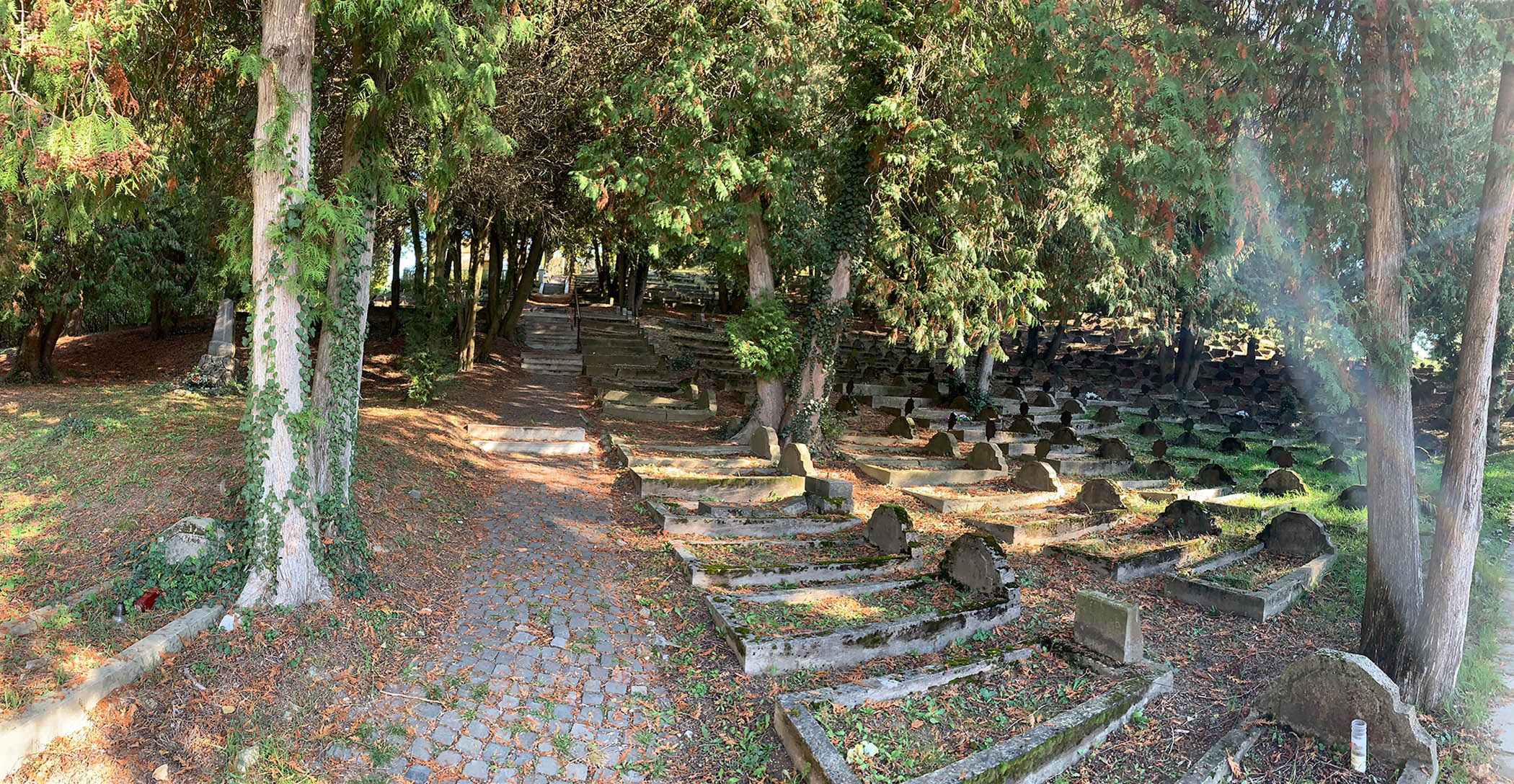
Exhumation of Yugoslav Soldiers
In 1925, a burial chapel was added to he war cemetery for soldiers from Yugoslavia. The construction of this chapel once again altered the layout of graves in the war cemetery, as exhumations took place. The Yugoslav authorities favoured the so-called “French” burial method, which was used when soldiers’ graves were scattered over a large area. In such cases, the graves were exhumed and relocated to a single site, where the remains were placed in collective ossuaries. The city of Trenčín was known in Yugoslavia for the uprising in Kragujevac. In honor of the Slovak soldiers executed there, a magnificent memorial was built in this city. It was desirable for a similar place of reverence to be established in Trenčín in honor of the fallen soldiers from Yugoslavia. Essentially, it was a political request, as there was no large number of Yugoslav soldiers buried in Trenčín.
Details of exhumations and placement of remains in the chapel
According to the design, the chapel was intended for 180 exhumed remains. At the Trenčín War Cemetery (municipal), 18 soldiers originally from Yugoslavia were identified. It is certain that the minutes of the administrative committee of the Trenčín District Office meeting, dated January 23, 1925, state that trial exhumations were conducted. The exhumation of soldier Nego Agrics, who died of pleurisy on April 5, 1915, was carried out at the Trenčín War Cemetery (municipal), and the exhumation of soldier Sava Jovanovič, who died of pneumonia on October 31, 1918, was carried out at the Trenčín-Veľká Kubrá War Cemetery. Apparently, they were the earliest and the latest buried Yugoslav soldier in Trenčín. The exhumation committee concluded that the remains were in such a condition that there were no hygienic or health concerns preventing the completion of all exhumations and the relocation of the remains to the new burial chapel.
Even though we do not have precise documentation describing the exhumation process, it is certain that 17 soldiers were exhumed. As a result, 17 individual graves in Sectors A and B at the Trenčín War Cemetery were removed. Soldier Georg Hauslich was never exhumed. The reason for his remains being left in the original grave is unknown. We have no reason to doubt that 153 soldiers were exhumed from the Trenčín-Veľká Kubrá cemetery in a similar manner. The burial chapel should therefore contain 170 exhumed remains. The exhumations must have taken place between 1925-1928, as on May 6, 1928, a grand ceremony was held in Trenčín with a Yugoslav delegation present to officially hand over the tomb to the care of the city of Trenčín.
Conclusion
The results of the research, which document all known changes, ultimately provide the data recorded in the table.
| Sector | Number of graves | Number of the buried |
|---|---|---|
| Sector A | 240 individual graves | 240 buried |
| Sector B | 126 individual graves | 126 buried |
| Sector C | 59 individual graves | 59 buried |
| Sector C | 1 mass grave | 39 buuried |
| Burial chapel | 1 mass grave | 170 buried |
| Total (after exhumation) | 425 individual graves + 2 mass graves | 634 buried |
This cemetery also contains numerous military graves that were added particularly during the interwar, World War II, and post-war periods. Unlike the war graves that make up the cemetery, are protected by international treaties and are irremovable, military graves do not have such legal protection. Families of deceased individuals with a military background often preferred to bury them at the nearest war cemetery. There are the graves of World War I veterans, members of the interwar Czechoslovak army, as well as members of the World War II resistance, and the post-war Czechoslovak army. It would be appropriate to approach this issue with sensitivity and responsibility. The war cemetery should be properly maintained without unnecessarily removing veterans’ graves.
The author of the mentioned documents is Radoslav Turík.

; ?>)

